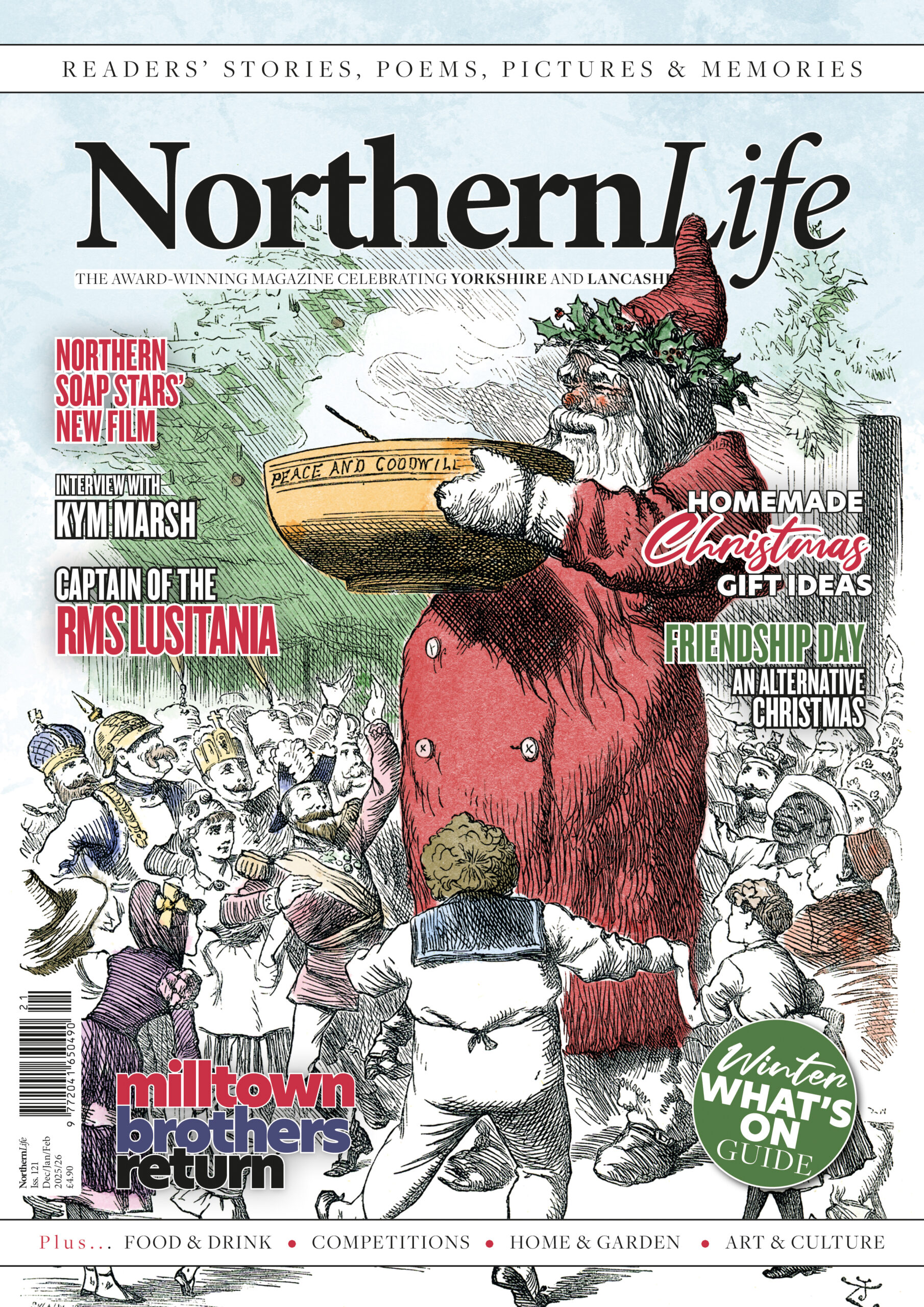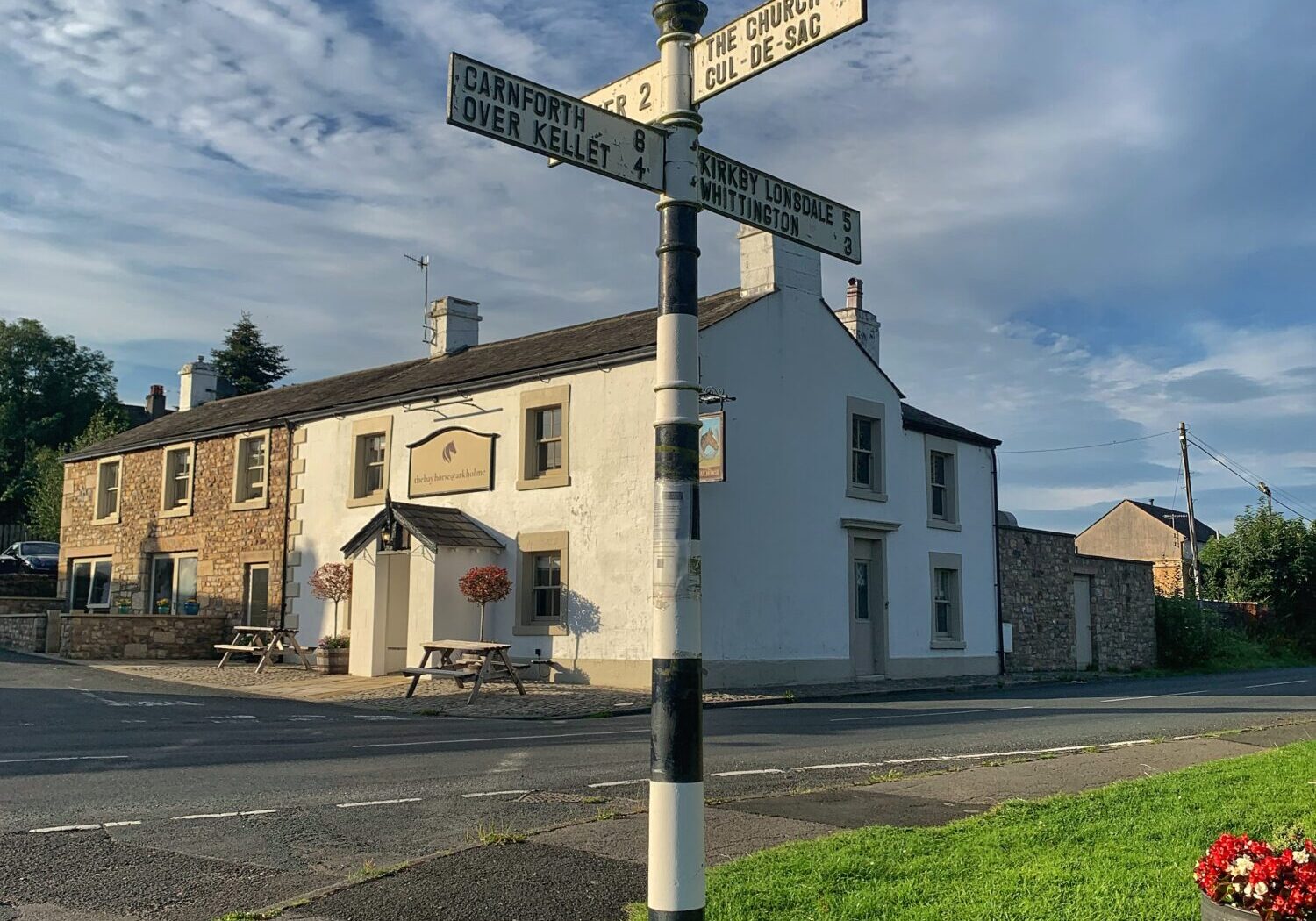
A Tale of Two Villages: Surprise and Thanksgiving in the Lune Valley
by Graham Dugdale
Graham Dugdale investigates the link between two contrasting settlements
It may be surprising to learn that the Lune Valley in North Lancashire has experienced significant conflict during its turbulent history over the last few centuries.
Most well-known is the incursion by Oliver Cromwell at Hornby during the Civil War in the 1640s when he occupied the castle. Well before this assault, defensive structures were built in many of the current villages, earning the valley a debatable accolade for possessing the largest concentration of motte and bailey castles in England. Motte is a raised earthwork on which the protective bailey is then erected. In all cases, only the former still exists. The finest example is Castle Stede, located close to the Loin Bridge, spanning the River Lune a mile north of Hornby.

Castle Stede. Credit Tony Turner.
This particular article is only concerned with two of these villages in the Lune Valley, namely Arkholme and Melling. The former, located on the western side of the Lune, faces its neighbour across a field on the opposite bank of the river. Many times, I have passed through Arkholme, little realising that the road merely brushes the edge of this unique village. Its secluded trait is the main attraction, particularly for those who live here. Quiet and unassuming, no other village is so well known yet remains one of the least visited.
“Arkholme is on the sunny side but Melling is on the wealthy side.”
The older part of the settlement comprises a linear row of mainly 17th-century stone cottages straddling the narrow lane leading down to the river. It was here that a ferry was used to convey travellers across the swirling waters for the continuation of their journey to Melling and beyond. The ferryman lived in a cottage nearby. Originally granted a market charter in 1279, it was not until 1866 that Erwhhm, as it was then known, became a parish. The 14th-century chapel of St John the Baptist, standing beside its motte, has the honour of housing a 21-inch bell that is reputed to be the oldest of its kind in the country.

The 14th-century chapel of John the Baptist stands beside a motte.
Until that time, burials were conducted across the valley at Melling, and the funeral party had to make use of the ferry. One such cortege was swept away downstream during a period of severe flooding, and two mourners were drowned. What became of the coffin remains a mystery to this day. Unless, of course, you, dear reader, know differently. The saying used to be banded about on the far side of the valley: ‘Arkholme is on the sunny side, but Melling is on the wealthy side. ‘ A rather unfortunate intimation that Arkholme was the poor relation. Not having its own consecrated burial ground did not help matters. That thankfully changed once parish status was granted.
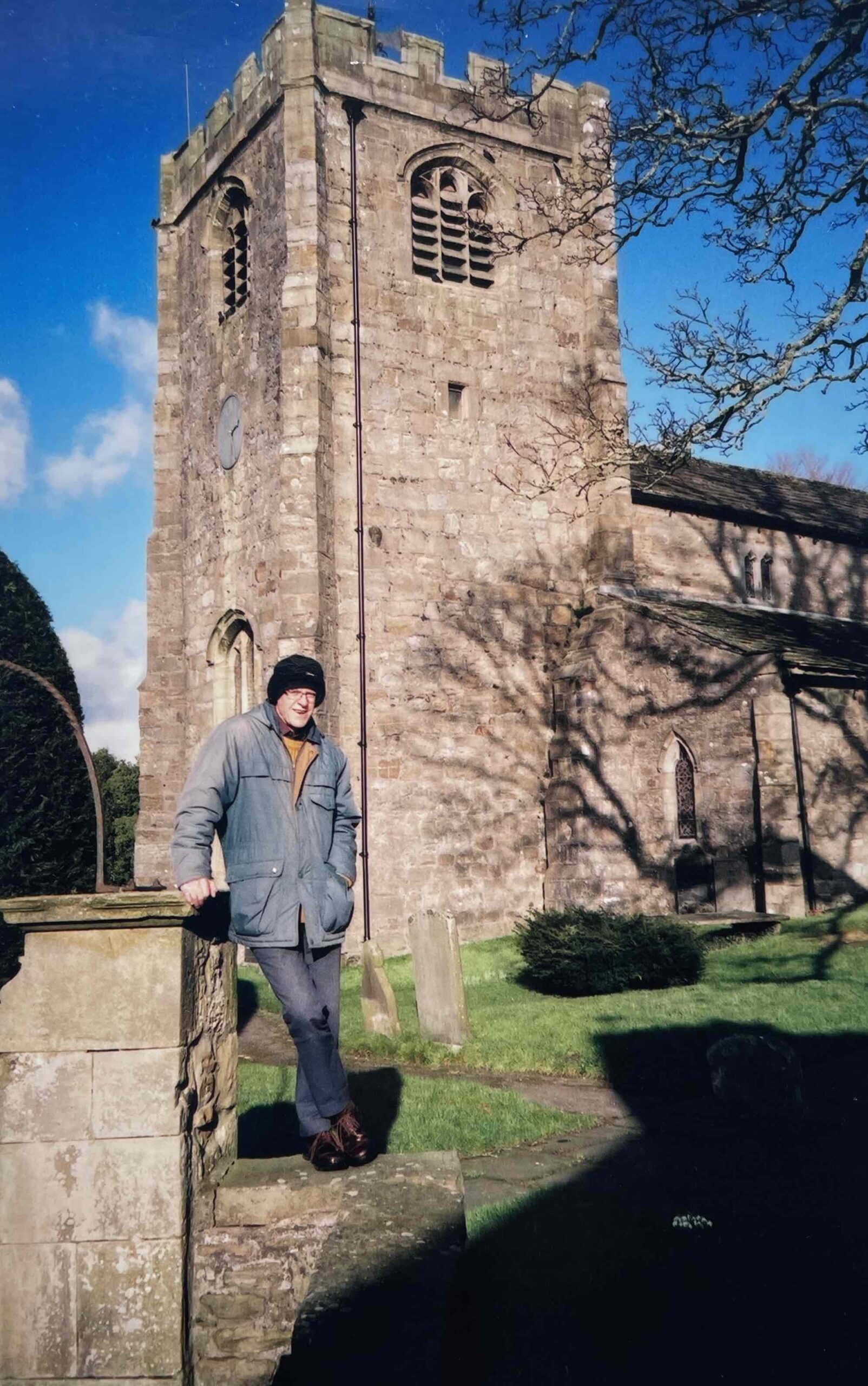
St Wilfred’s in Melling.
Even so, the church and graveyard of St. Wilfred’s in Melling, located on the ground adjacent to its own motte, is locally known as ‘The Cathedral of the Lune Valley’—a further prod at the neighbour across the river. One disadvantage of Melling, however, is that it straddles the main road linking North Lancashire with the Yorkshire heartland. It is hard to ignore this as you stroll down the village street where cottages of dressed sandstone weathered to a rustic hue strive to retain their rural heritage as modern traffic trundles by.

The Graveyard in Melling. Credit Tony Turner.
A concentrated effort is certainly necessary to evoke a poignant nostalgia for a more gentrified age when the horse-drawn mail coach announced its arrival with fanfare on the posthorn, and cattle were driven to market along this narrow thoroughfare. It is indeed a miracle that more accidents have not occurred with vehicles ending up in the lounge bar of the Melling Hall Hotel at the northern edge of the village.

Arkholme. Credit Tony Turner
The Darlington Family were the original inhabitants of the Hall, whose Georgian facade has clearly been extended at various intervals. During the First World War, Lady Darlington did much to alleviate the suffering of troops wounded on the Western Front. The hall was transformed into a convalescent home and was in such demand that another was opened further along the main street.
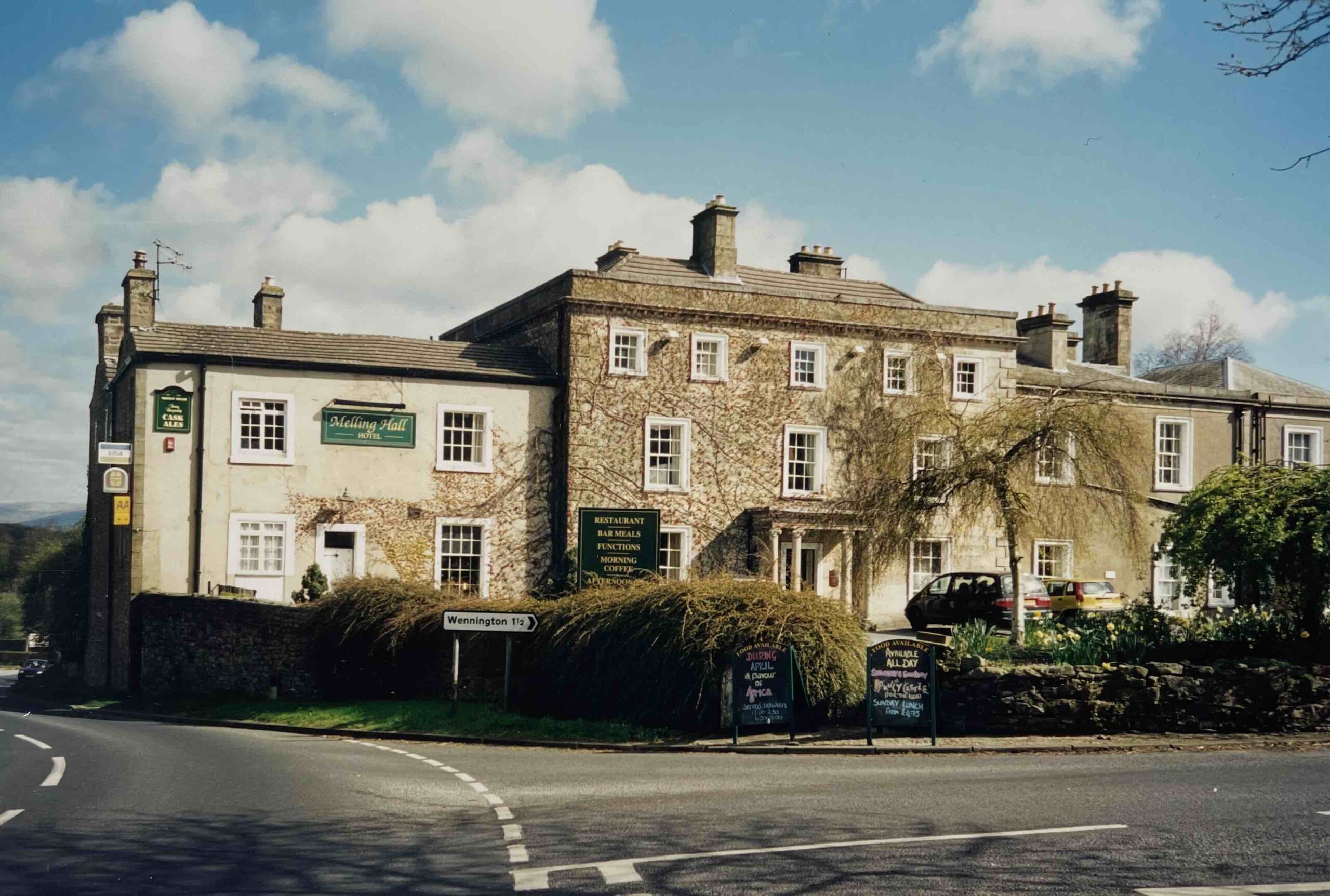
Melling Hall
It was not until some years later that the first intimation of a ghostly presence was reported in one of the guest rooms after the building had become a hotel. A lady dressed in purple was seen combing her hair in front of the dressing table mirror. When the landlady narrated this bizarre happening to an old villager, she was informed that Lady Darlington had frequently worn a gown of just such a colour. Nobody who spends a night in the hotel should fear a spectre that had clearly undertaken such munificent works for the benefit of the wider community.
An investigation has predictably revealed nothing untoward, not even by the proverbial church mouse.
Another weird and wonderful experience concerns a little man who is said to jump about on the beds in a state of fervent excitement. Only one metre high, sporting a triangular face and pointed nose, his legs have been reversed with knees at the rear—imagine that if you can. Whomsoever admits to having been heckled by this breezy leprechaun has doubtless been over-exercising his right arm in the hotel bar. Either that, or it’s my leg that is being pulled.
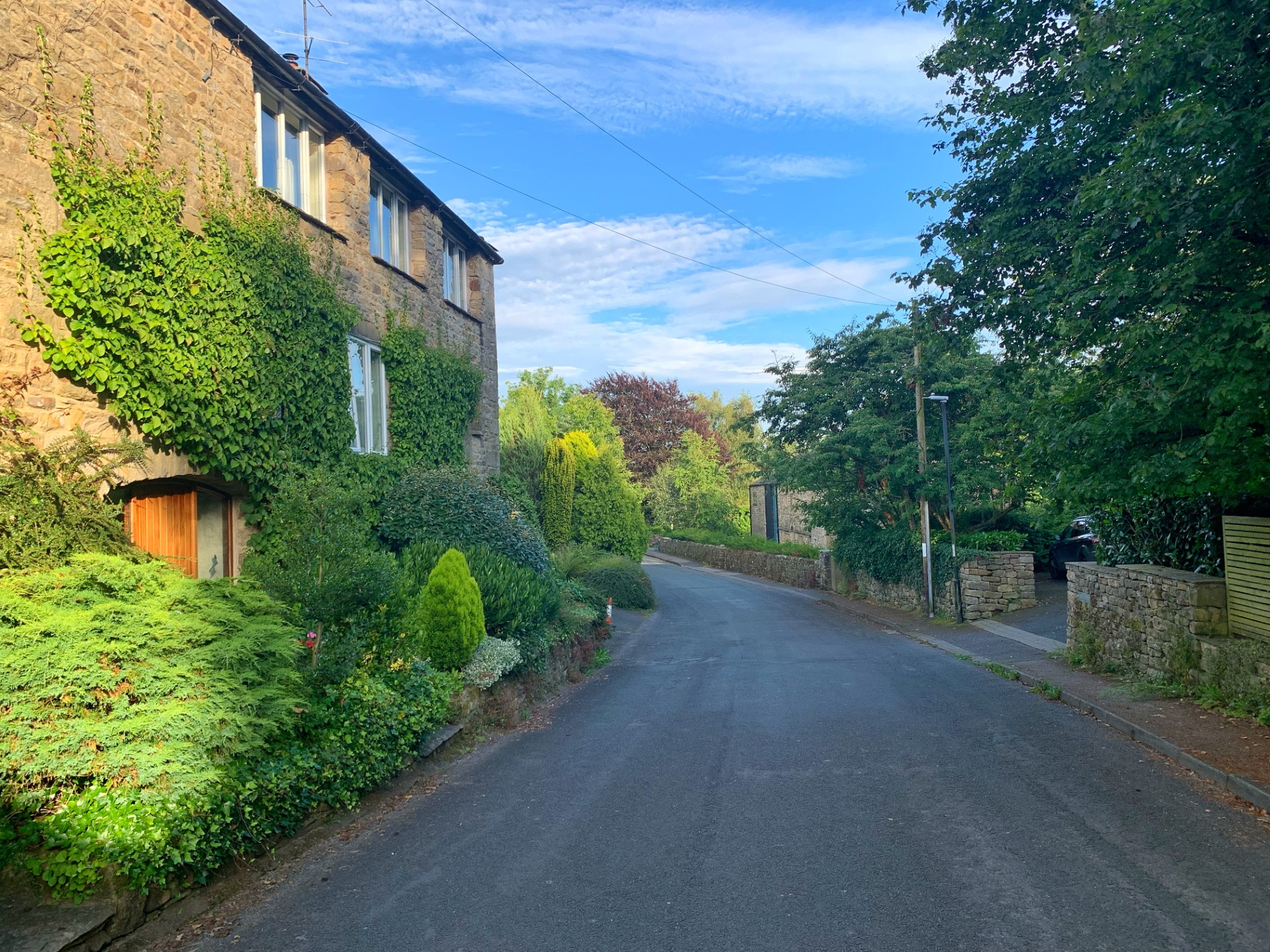
The last of the trio offering spiritual excitement at Melling Hall is a dog that is often heard padding softly about the upper rooms. An investigation has predictably revealed nothing untoward, not even by the proverbial church mouse. Perhaps both have made use of the secret passage connecting the Hall to the nearby church.
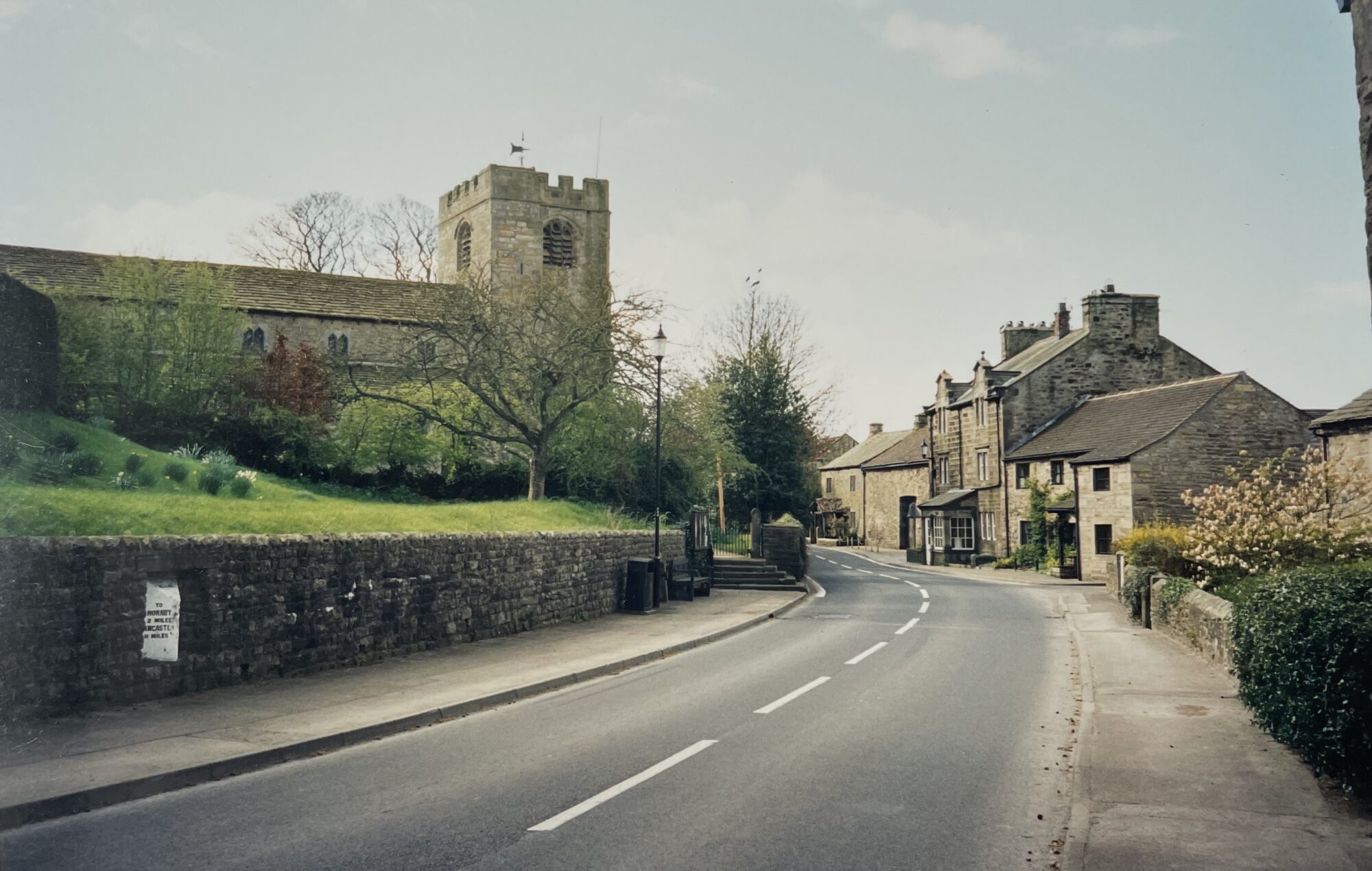
A secret passage (now blocked) connects Melling Hall to St Wilfred’s Church.
St Wilfred’s has enjoyed a chequered history stretching back to the 14th century, although there is evidence of 10th-century foundations. The secret passage (now blocked for safety reasons) was used as an escape route by defiant Catholic priests and their followers during the 16th-century Reformation, and the current church was restored to its present glory in 1763.
“Of the 59 men from a total population of 300 who marched off to fight in the trenches during World War One, all of them returned unscathed.”
In conclusion, it can be said that a truly remarkable occurrence raised Arkholme above the sunny disposition originally attributed to its alleged lower financial status. No longer does it lie in Melling’s shadow nor any other settlement in the vicinity. The reason for such a switch of fortune is the fact that of the 59 men from a total population of 300 who marched off to fight in the trenches during World War One, all of them returned unscathed. When you consider that towns such as Accrington recruited ‘pals’ brigades, which were decimated in the fighting, Arkholme’s achievement is exceptional. Is it any wonder, therefore, that it has become known universally as ‘The Thankful Village’? And who can deny them that honour?
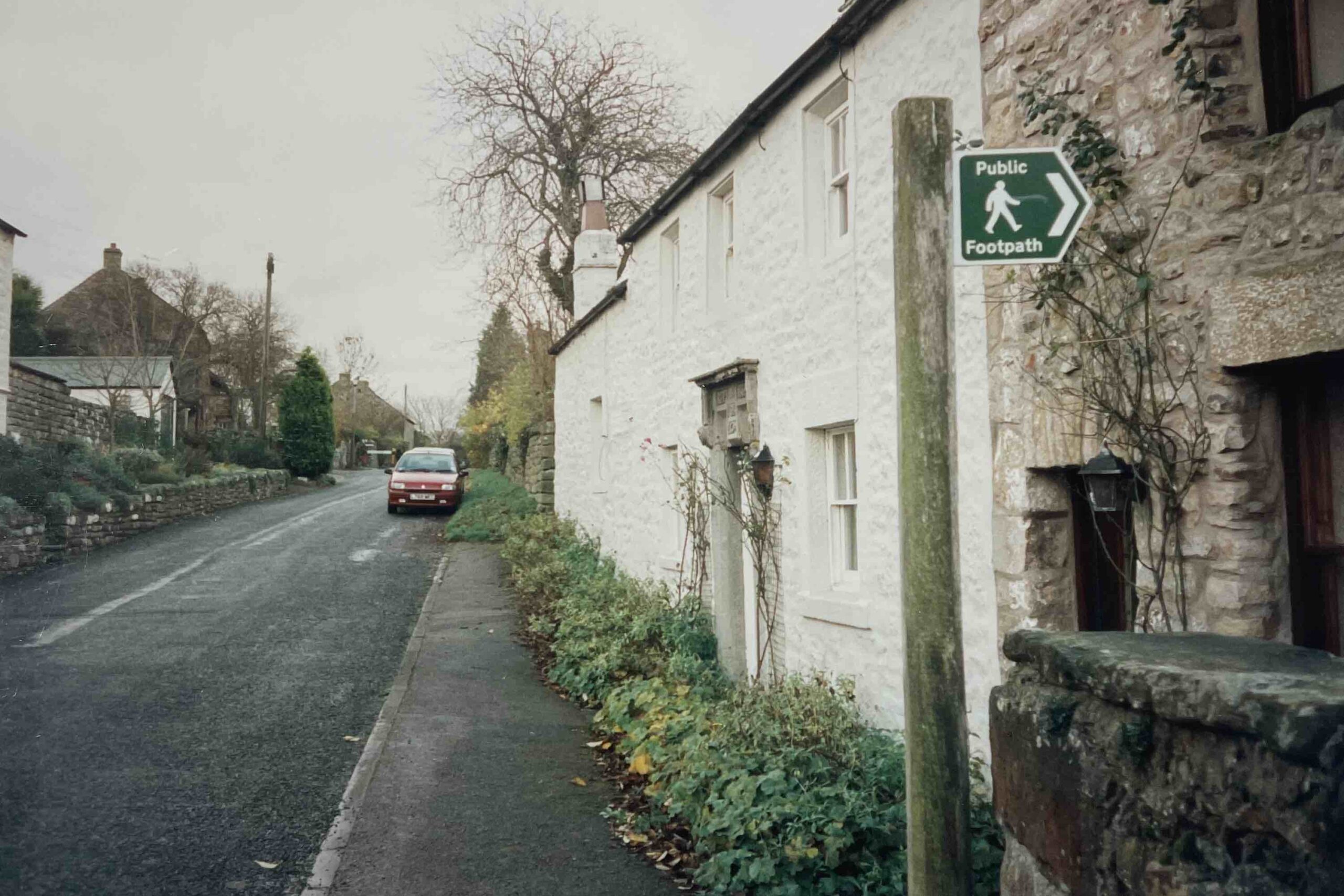
The quiet main street of the ‘Thankful Village’
Read Graham’s previous piece about the Lancashire village of Woodplumpton here.
NorthernLife Sep/Oct/Nov 24
